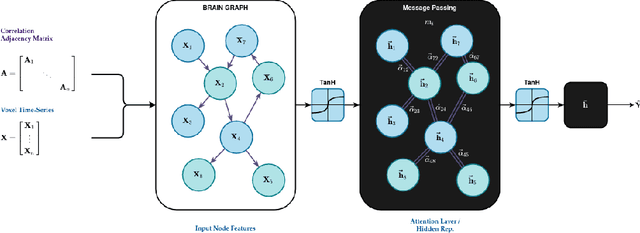Aiding Medical Diagnosis Through the Application of Graph Neural Networks to Functional MRI Scans
Paper and Code
Dec 01, 2021

Graph Neural Networks (GNNs) have been shown to be a powerful tool for generating predictions from biological data. Their application to neuroimaging data such as functional magnetic resonance imaging (fMRI) scans has been limited. However, applying GNNs to fMRI scans may substantially improve predictive accuracy and could be used to inform clinical diagnosis in the future. In this paper, we present a novel approach to representing resting-state fMRI data as a graph containing nodes and edges without omitting any of the voxels and thus reducing information loss. We compare multiple GNN architectures and show that they can successfully predict the disease and sex of a person. We hope to provide a basis for future work to exploit the power of GNNs when applied to brain imaging data.
 Add to Chrome
Add to Chrome Add to Firefox
Add to Firefox Add to Edge
Add to Edge